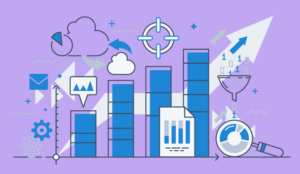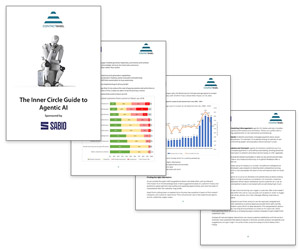Phoebe Asquith at Sabio explains how to use data to drive your wellbeing strategy.
At our recent Disrupt 2023 conference I outlined how, at Sabio, we’re using data to ‘think outside the tick-box’ and help create lasting and effective wellbeing strategies for clients.
When discussing wellbeing, we recognise that it is a topic that can feel overplayed or seen as a ‘nice-to-have’.
That’s why research reports – such as the CCMA’s recent Contact Centre Wellbeing study – are so important to understand the scale of the issue.
It’s also why our focus on wellbeing at Sabio has always been to adopt a data-led approach – one that can begin to track wellbeing and evidence decision-making, matching the actions that we take with quantifiable business improvements.
Our goal is to help organisations connect wellbeing data and insight into wider business strategies and tangible actions that enable meaningful change, and – more importantly – establish whether changes in wellbeing are supporting specific goals and business outcomes.
Typical end goals here might include whether employees are happy and confident, are taking less time off due to stress, are engaged at work, and wanting to stay and progress in their roles.
For example, in the contact centre, we know there’s a direct link between advisor happiness and customer satisfaction, with customers recognising improved service levels.
Therefore, done right, addressing workplace wellbeing can have significant cost savings and prove to be a huge differentiator for organisations.
It is important to recognise just how quickly the role of the contact centre advisor is changing and the impact this is having on employee wellbeing. The adoption of AI and automation has seen a radical readjustment.
Before AI, advisors were largely dealing with routine calls, with perhaps one out of five proving more challenging. With these common calls often now routed through automation, advisors find themselves dealing almost entirely with more complex, challenging and emotionally charged interactions.
These engagements are clearly of high value, but they can also leave advisors feeling emotionally exhausted and often disconnected from success.
We help clients to address this and other challenges in our three-stage Wellbeing Programme. First, an initial Spotlight Consultancy engagement to benchmark and understand current workplace wellbeing.
Following this, the application of our Wellbeing Technology enables us to collect wellbeing data and map it to our validated model of wellbeing.
Importantly, the third stage of ongoing Quarterly Engagement supports interpretation of ongoing results and helps to adjust and tailor a strategy accordingly.
Developing a Data Model for Wellbeing
To make a data-led approach to wellbeing possible, we need a valid model of wellbeing to which we can apply our wellbeing data. It is important that this model takes account of the current issues and challenges facing advisors.
This is why we created a model of wellbeing that maps environmental and experiential factors that impact mental health. To build this model we conducted research with people who had experienced burnout, identifying key themes in their experience within the workplace.
Factors of the model were validated across additional surveys as well as through comparison with established psychological frameworks and assessments.
Our findings identified four key areas of wellbeing – Emotions, Boosts, Pressures and Behaviours – that are key wellbeing drivers.
- Emotions reflect somebody’s subjective experience of their workplace.
- Boosts capture environmental factors that can help boost energy.
- Pressures looks at those environmental issues that can drain energy.
- Behaviours represents actions that individuals can take to improve their wellbeing.
Within each of these four areas, there are multiple aspects of wellbeing that we can measure and understand.
The initial Consultancy phase of the Wellbeing Programme applies this model to map everyone’s wellbeing – effectively benchmarking wellbeing across your customer service operations.
Once a benchmark is established, it becomes possible to track the impact of different wellbeing actions and initiatives to see if they have made a difference.
And with advisors updating their own wellbeing profiles on an ongoing basis, team leaders and managers can start to track anonymised wellbeing performance through a birds-eye view across the contact centre.
This, in turn, helps ensure that contact centre managers have the right conversations around wellbeing, and can put in place actions and initiatives that will have the most impact.
With the Right Data and the Right Approach, Everybody Wins
Improved contact centre wellbeing is of course important, but it’s even more significant when you align these improvements with your strategic business goals.
By taking operational performance levels and working patterns – and then cross-referencing these information with employee wellbeing data – we’ll also start to understand more about how stronger employee wellbeing can translate to improved overall customer service and business performance.
This will help to tighten the feedback loop in establishing the impact that sustained and iterative wellbeing programmes can have on employee resilience.
Getting this right means that everybody wins, with target benefits including reduced attrition, absence and presenteeism, along with customer experience advisors who feel more in control and who have confidence in the skills and resources they have available to solve customer problems.
For more information about Sabio - visit the Sabio Website
Call Centre Helper is not responsible for the content of these guest blog posts. The opinions expressed in this article are those of the author, and do not necessarily reflect those of Call Centre Helper.
Author: Sabio
Published On: 13th Apr 2023
Read more about - Guest Blogs, Sabio






 Sabio Group is a global digital customer experience (CX) transformation specialist with major operations in the UK (England and Scotland), Spain, France, Netherlands, Malaysia, Singapore, South Africa and India. Through its own technology, and that of world-class technology leaders such as Amazon Connect, Avaya, Genesys, Google Cloud, Salesforce, Twilio and Verint, Sabio helps organisations optimise their customer journeys by making better decisions across their multiple contact channels.
Sabio Group is a global digital customer experience (CX) transformation specialist with major operations in the UK (England and Scotland), Spain, France, Netherlands, Malaysia, Singapore, South Africa and India. Through its own technology, and that of world-class technology leaders such as Amazon Connect, Avaya, Genesys, Google Cloud, Salesforce, Twilio and Verint, Sabio helps organisations optimise their customer journeys by making better decisions across their multiple contact channels. 











